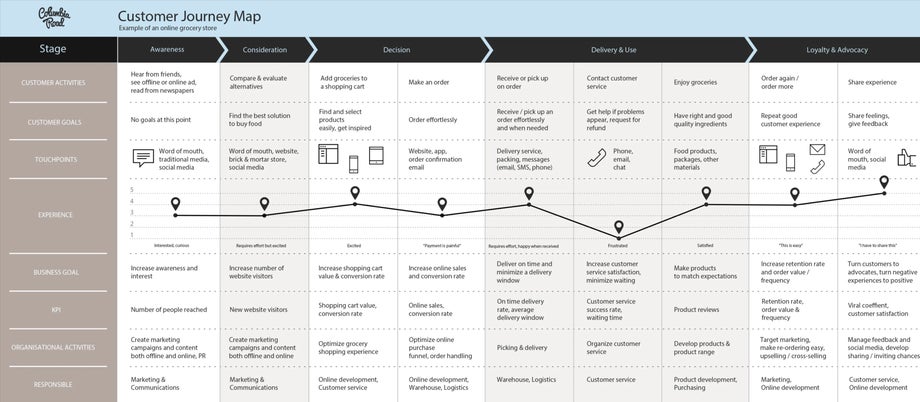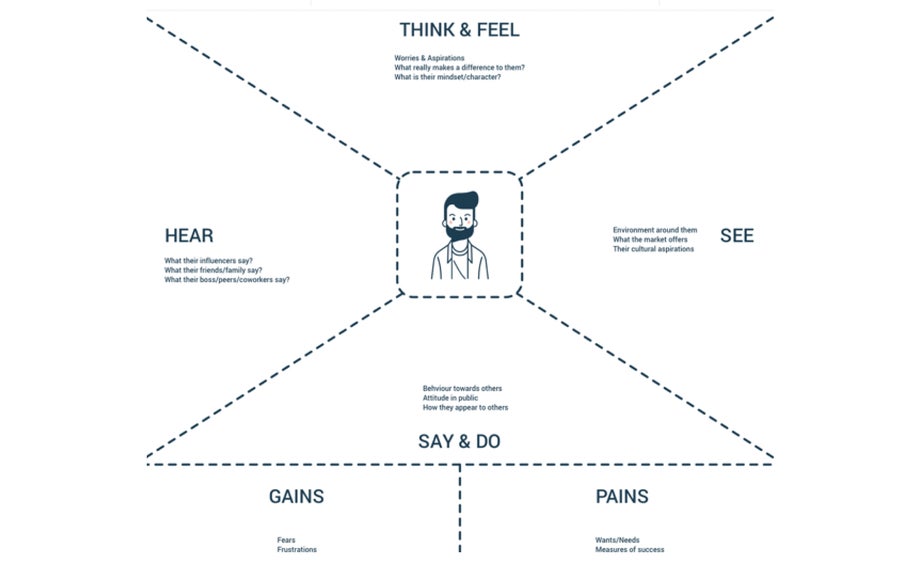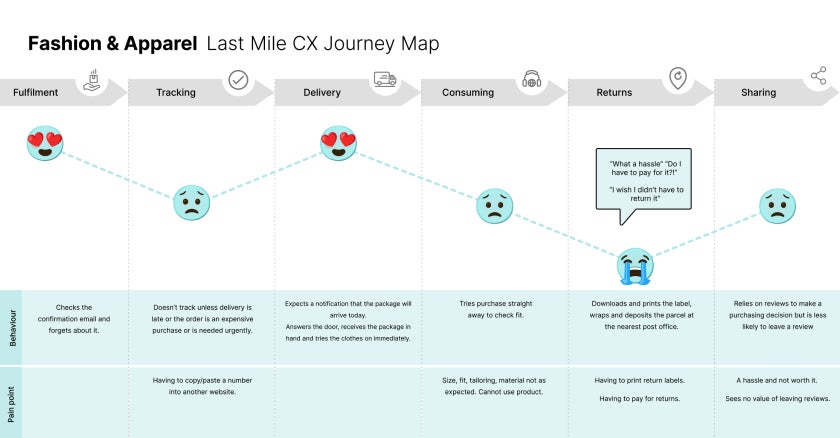

18.10.20236 mins read
Customer experience (CX) is everything. Whether online or in-person, everyone from the CEO to the developer is working today to ensure the CX is pitch-perfect. While we can all agree that delivering a great CX is key to customer success and retention, there needs to be more clarity around what good CX is.
As a user experience (UX) design manager and someone who has worked in design for decades, I can confidently tell you that there is no silver bullet when creating good CX; it will differ and depend on several things.
However, one thing is sure- the key to good CX lies in the customer journey - in the process a customer has to follow before they can complete a transaction with you and after that transaction is complete.
It is here where brands have the best opportunity to develop a great CX that drives customer success and loyalty.
Here’s a great example of a customer journey map (CJM) template that illustrates the full length and detail of what should be on each map.

Source: Medium
This is one of those things that everyone talks about, but very few take the time to sit down and complete.
There are 10 fundamental steps.
Targets are not only for shooting ranges. Begin by laying down who your customers are and building up information around each, including their characteristics, goals, and challenges. This will help you understand their perspective throughout the journey.
To begin, you must create a list of the places or points where your customers interact with your brand. For example, this will include website visits and social media interactions- and be specific about which platforms-customer support calls, purchase experiences, and more.
Once you have established these points, collect relevant data and insights about the experience at each touchpoint. The goal is to understand how customers feel and think at each stage. There are multiple ways to gather this information- I usually conduct interviews, but surveys and website analytics or customer service logs work, too.
From the feedback you have collated, divide the responses into sections.
"Think," "Feel," "Say," and "Do." Fill in according to the responses.

Source: SketchApp Template
Now that you know the touchpoints, chart out the steps taken or what the journey looks like for your customers.
It might look something like:

Every industry will have unique elements- so this is just a guide. Be sure to align it with your specific product or service.
Add the touchpoints identified in Step 2 for each stage of the journey. This will give you the most accurate idea of how customers feel about each stop on their journey with you.
Here's an example we recently developed for a project we are working on around online shopping.

This can be challenging because it means looking at what is going wrong with your process. Leverage your empathy map here and be brutally honest about the gaps, blocks, and frustrations that customers are experiencing.
In some of our research, we found that when customers could purchase without logging in, a huge irritation was readily fixed by offering a guest check-out option.
While it might seem obvious, sometimes, this is the area where there is lots of disconnect. Again, put yourself into your customers' minds and write out what they want to achieve at each stage and their expectations. This is particularly important when the item that is being purchased either involves a large sum of money or is really important, like health insurance.
It’s also essential that, as part of this discussion, attention is paid to the commercial goals. At the end of the day, yes, the customer’s needs must be met, but also the business's goals.
As you would before you start any journey, or at least as we did before Google Maps, the goal is to identify any bottlenecks or gaps. Review your map through this lens, highlight the problem areas, and look for ways to improve and remove these blockers.
And again, and I stress this point, the goal is to improve the journey to meet both customer expectations and encourage customer behaviour that meets business goals.
10 common pain points
- Long wait times - in-store queues, phone support, or website loading time.
- Complicated website or app navigation due to poor UI/UX design.
- When customers need help finding the necessary information to make an informed decision, such as product details, pricing, or return policies, it can cause confusion and dissatisfaction.
- Instances of rude or unhelpful customer service representatives, slow response times, or lack of resolution to customer issues can leave customers feeling dissatisfied and undervalued.
- When the CX is different online versus in-store or mobile app versus desktop.
- Hard-to-follow processes, such as a lengthy and complicated checkout process, convoluted onboarding procedures, or complex return processes.
- When interactions with your brand feel generic or irrelevant- I mean, surely you know me that I have not one but two dogs.
- Glitches, errors, or downtime with your website, app, or other digital platforms.
- When the purchased item doesn’t meet expectations - although this might take a little longer to solve. However, sometimes, it can be addressed via the product's description section.
- Difficulties accessing customer service after purchase, challenges with returns or exchanges, or insufficient product documentation.
And this might be the most important step of all. TAKE ACTION. Now that you know where the issues are, RESOLVE THEM.
How?
- Decide which ones have the biggest negative impact and start with them.
- Try to figure out the root cause - even if that means more research and customer feedback.
- Look within your organisation as a whole for the answers- this means asking outside of just product or marketing. Ask everyone to take the journey and see what the response is.
- Put your customer at the centre of everything - and work out from there. Always walk in their shoes- not product or sales shoes.
- Test your solutions out with a small group to begin with or leverage some A/B testing.
- Remember- the focus is always on how to improve your service. Once you have done this and decided the best approach- IMPLEMENT.
- Everyone has to be on board, from the CEO to the CPO - this is about making sure that a common goal unites your whole brand- CX.
- CJMs are not a check box item- you must keep reviewing and returning to the scene to see if the changes have worked and made the journey better.
- The only way to do that is to keep asking your customers - continually check in with them and get their feedback. Everything changes….all the time. So keep reviewing and keep working to improve your CJ.
In conclusion, customer journey mapping is an ongoing process, not a one-time task. The key to lasting success is a commitment to constant review, adaptation and improvement to meet the ever-changing needs and expectations of your customers.

Sign up to our mailing list today.


